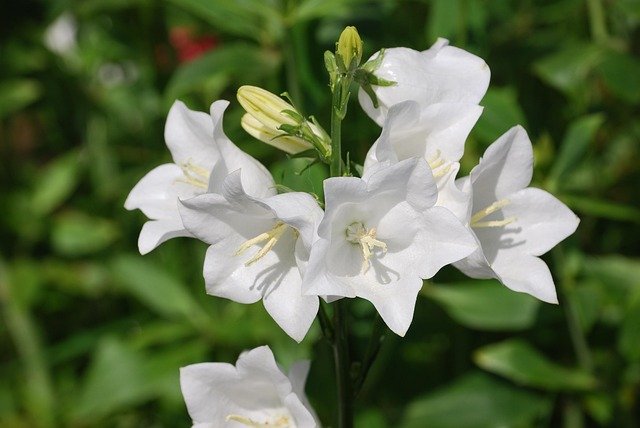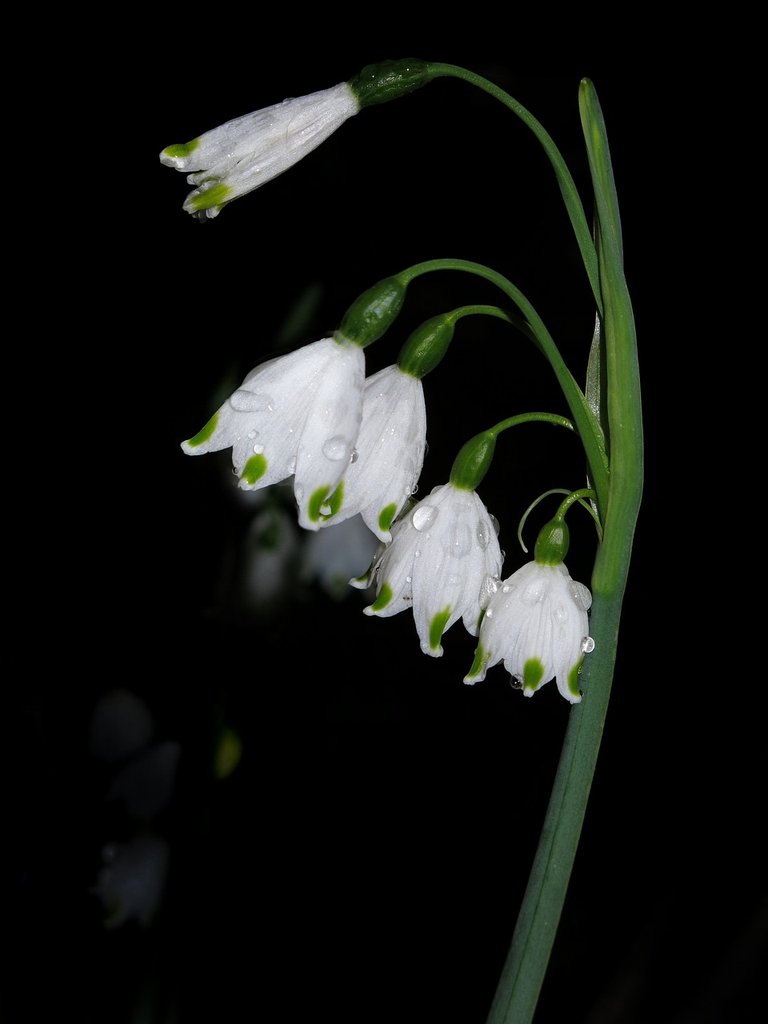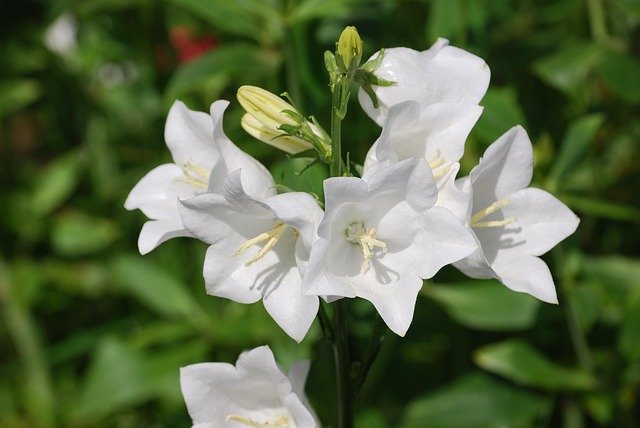Canterbury Bells "Champion White"
Campanula medium, commonly known as Canterbury Bells, are good looking,in vogue and an excellent cut flower with a long vase life. They symbolize thankfulness and loyalty. In gardens, they are best grown en masse in borders or among shrubs. It prefers cool or warm zones and is native to mid and southern Europe; not suitable for the tropics or hot, dry regions. It thrives in lightly shaded to sunny locations in well-drained soil. Keep well watered.
This Champion White variety was grown to be productive decade It blooms at about 8-12 months per year, depending on your location ,and grows into maturity extremely quickly (15 weeks). The "Champion" integrates low heat demand and a quick growth period as well as upright-facing flowers. It is the best flower for Valentine’s Day, Easter and Mother’s Day.
Height at maturity: 65-90 cm
• Spread at maturity: 25-30 cm, 8-10 stems per plant; bells are 4 cm in diameter
• Light needs: For the first 4-6 weeks after germination, make sure daylight is less than 11 hours; after that, they prefer full sun to part shade
• Hardiness: USDA Zones 3-9
• Type of soil: Moist, fertile, well-draining, high in organic matter
• Soil pH: 5.8 – 6.2
• Where to plant: Flower beds, borders, and containers
• Features: Annual
• Pruning: 3-4 weeks after germination, you can gently pinch back your plants as they begin to elongate vertically
• Pests: Very susceptible to thrips
• Best time to sow seeds: August-February
• Flowering period: January-June
• Common names: Cup and Saucer
• Plant type: Cold-season hardy annual
• Difficulty: Easy source
CARE
Plant Campanula medium seeds inside your house from fall to mid-February, spacing 25 cm apart. Cover seeds lightly with vermiculite and maintain high humidity. Keep the room temperatures at 15-18°C. Germination takes about 3 weeks.
Monitor the growth,when 5-6 leaves open, you can start to introduce them to cooler temperatures (13-15°C). After a few more weeks, you can transplant them into bigger pots or directly in the flower beds. Do not allow the plants to dry out in order to prevent tip burn.
Support is recommended to avoid damage to plants during windy periods; especially for single-stem production.


